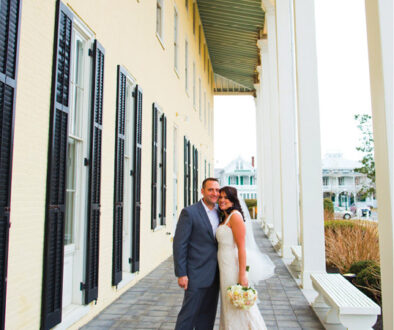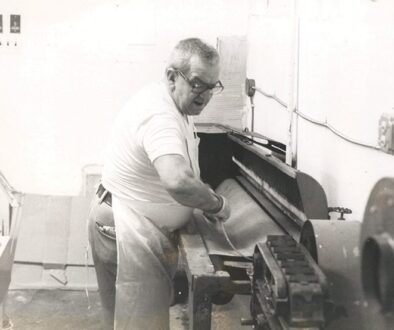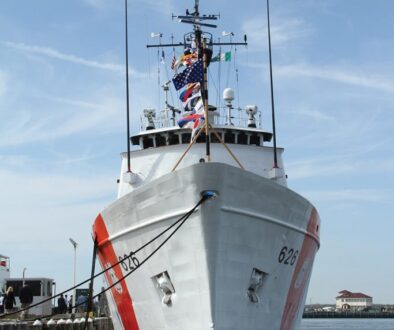Brew Crew
Seven or eight years ago, two young men who’d met in college at Villanova in 2001 began to fool around with beer-making. From the rooftop of an apartment building in Park Slope in Brooklyn, Ryan Krill filled his bathtub with snow, begged and borrowed some used equipment from local restaurants, and concocted his first batch of beer, cracking the tub’s porcelain in the process. At around the same time, Chris Henke—who’d gotten a home-brew kit for Christmas from his roommate—set up his own experiment in industrial chemistry in the garage of his house in North Wales, Pennsylvania, fiddling around with ingredients until he’d cooked up a brew that he called Jump the Jetty. And, together, the two friends refined their hobby in the backyard of Ryan’s family’s beach house on 22nd Street in Avalon.

Today, the renamed Jump the Jetty—using what Henke asserts is pretty much the same formula—is the flagship brew of the Cape May Brewing Company, founded in 2011. “That’s what turned into Cape May IPA,” he says, referring to the company’s India pale ale, its best-selling brand. And what started as a hobby (“I’m not sure if they knew whether it was legal or illegal at the time,” says Bill McCaughey, a brewery worker giving visitors a tour) has turned into a multimillion-dollar business that in the spring announced a $1 million expansion. Of course, what Krill and Henke did for kicks early on wasn’t exactly Breaking Bad (or “Brewing Bad”); among other things, it’s perfectly legal to whip up beer at home for your own use. But, in just four years, they have built an empire of sorts, complete with its own sales force, its own trucker-deliverymen, and hundreds of restaurants, bars and liquor stores from Cape May to Burlington County and into southeastern Pennsylvania that offer their beer. “It’s pretty wild, how it’s gone from a hobby to a pretty good-sized, year-round business with 18 full-time employees,” says Krill.
From the fledgling venture producing just ten gallons of beer per batch at its infancy, last year the company churned out more than 2,500 barrels. (One barrel is 31 gallons.) With its brand-new, $250,000 brewhouse—a gleaming array of stainless steel tanks and pipes that arrived in March, after a ride on a cross-country flatbed all the way from Premier Stainless Systems in San Diego—the brewery expects to double its output in 2015, eventually boosting it within a couple of years to 15,000 barrels annually. And it’ll unfold inside a just-renovated, cavernous building on the grounds of the Cape May airport, just off Breakwater Road in Lower Township. Besides the new brewhouse, already settled into place inside what had been the dilapidated ruins of a former wallpaper company, Cape May Brewing Company also boasts an impressive new bottling and packaging line, a spic-and-span cold storage area, shipping facilities, and more.
On a recent Saturday afternoon, the Cape May Brewery’s tasting room is packed, with a healthy mix of locals and visitors from Philadelphia, north Jersey and beyond. It’s early April, and outside it’s unseasonably chilly, but inside patrons are quaffing suds in four-ounce samples and pints and filling 64-ounce bottles called “growlers” for take out. And just as connoisseurs of fine wine describe the subtle taste and bouquet of their favorite shiraz or chardonnay, the brewery describes each of the sixteen beers listed on its ever-changing menu in colorful, often flowery language not usually associated with people used to Budweiser, Miller or Coors. Of its Cape May IPA, says the menu, “We load it with Cascade hops that provide floral and citrus notes.” The “nose” of its Justin’s ‘Niu’ Coconut IPA is “filled with freshly toasted coconuts and grapefruit, rounded out with mango and other tropical fruits.”
This is not your grandfather’s beer—and that’s no accident.
If you came of legal drinking age before, say, the 1990s, it’s very likely you grew up without imbibing anything that called itself a “craft beer.” According to the Brewers Association, formed to represent small, independent and regional breweries, by the end of the 1970s there were only 44 beer makers in the United States after a wave of bankruptcies, mergers and consolidation; mostly manufacturing giants, only a tiny handful were “craft” breweries. Today, there are 3,464 breweries—of which 3,418 are microbreweries, brew-pubs, and regional craft breweries. (Just last year alone, 615 new ones opened their taps.) From nearly zero a generation ago, craft breweries have elbowed their way to an 11 percent share of the market, growing at an accelerating rate and throwing a healthy scare into Big Beer. (Thus, Budweiser’s 2015 Super Bowl ad, accompanied by clomping Clydesdales and marshal music, trumpeted: “Proudly a macro beer. It’s not brewed to be fussed over. … Let them sip their pumpkin peach ale.”)
Henke points out that craft beer has found its niche. “It really started to catch on in the ‘80s,” he says. “It followed wine. Everybody was ready for flavor.” Adds Krill, “By then people realized that there was more to life than microwave dinners and light lager.” Beginning on the West Coast, with Anchor Brewing on Potero Hill in San Francisco and, later, New Albion Brewing Company in Sonoma, microbreweries and brew-pubs took off, catching Big Beer off guard. Five years ago, wondering why south Jersey didn’t have a craft brewery, and with the help of Bob Krill, Ryan’s father, they decided to get into the game, investing $15,000 in their hobby-turned-business. “We asked ourselves, ‘What could go wrong?’” says Ryan Krill.
As it turned out, pretty much nothing. From its earliest beginning—Krill says that it started as a “nano-brewery,” nano- being the techie term for “one-billionth,” that is, a thousand times smaller than micro—Cape May Brewing Company began lining up local bars and restaurants as outlets for its product. First was Cabanas, on Beach Avenue in Cape May, where the company’s beer got rave reviews and, according to then manager Payton Bowman, sold out as fast as Krill and Henke could deliver it. “It was a huge, huge draw,” says Bowman. “We were selling as much as they could supply.” Cabanas was soon joined by eateries such as Lucky Bones, the Mad Batter and many others throughout Cape May County. “They were smart to be the first ones on the block,” says Mark Kulkowitz of the Mad Batter. “When people come to the bar, they’ll ask for a Cape May beer just because it’s local.” At last count, Cape May Brewing Company supplies 240 customers, including a growing number of liquor stores. With its new brewhouse and bottling facility, the company expects to generate a steady of supply of six-packs and cases for a range of its most popular beers.
You can, in fact, try this at home, and according to the brewery’s blog, more than a million people do exactly that. There’s no secret to beer-making, really. There are only four basic ingredients: water, grain, yeast, and hops. The Cape May Brewing Company buys its grain, mostly barley, already processed, from Germany. “They’ve been doing it for a long time,” says Henke, with some understatement. The German maltster soaks the grain, and, after it begins to germinate, dries it in a kiln and mills it for export. When it gets to Cape May, the brewery takes the product, called malt, and mixes it with hot water in a huge tank called a mash tun, which allows naturally occurring enzymes to generate a sugar-rich liquid called wort. Some beer-makers tout the water they use (Coors boasts that its beer is “brewed with pure Rocky Mountain spring water”), but Cape May Brewing is perfectly happy to use unfiltered Cape May water, which works just fine. The wort is strained and transferred to a “boil kettle,” where it’s boiled along with hops, derived from flowers or seed cones of the hop vine, which contribute bitterness, flavor and aroma. Finally, the product goes to the fermenter, where yeast is added and the friendly little yeast microorganisms convert sugar into alcohol.
But perfecting beer is a kind of chemistry experiment, and Krill, Henke and their brewmasters love to tinker. By varying temperature, changing the grain-to-water ratio, using various kinds of hops, adding other ingredients, such as fruits, sugar or honey, and other methods, a beer-maker can create an endless variety of tastes. One of Cape May Brewing Company’s hottest products is its Honey Porter, made with 90 pounds of honey from a south Jersey supplier for every 15 barrels. That earned the company the coveted label of “Jersey Fresh” from the New Jersey Department of Agriculture, which bestows that designation only on products certified to utilize an approved amount of locally grown produce.
In New Jersey, beer making is an increasingly popular business. The Cape May Brewing Company is one of 26 craft brewers who belong to the Garden State Craft Brewers Guild, whose president is Ryan Krill. Outside of Cape May, elsewhere in south Jersey, there’s the Pinelands Brewery in Little Egg Harbor, Tuckahoe Brewery in Ocean View, the Tun Tavern Brewery and Restaurant in Atlantic City, and the long-established Flying Fish Brewing Company in Somerdale. Not only that, but in the pipeline statewide are 17 breweries in various stages of planning and development. But, in Krill’s and Henke’s view, the more the merrier. And to underline the point, they’ve organized Brews by the Bay, an annual event held on both sides of the Delaware Bay on the grounds of the Cape May-Lewes Ferry, at which eight New Jersey craft breweries and nine Delaware breweries will promote their wares to thirsty festival-goers.
As for the competition, Krill isn’t worried. “Demand,” he says, “has always been ahead of our ability to meet it.”









